THE NATIVITY OF THE BLESSED VIRGIN MARY
"Magnify, O my soul, glorious nativity of the Mother of God" - (Matins)
The feast of the Nativity of the Blessed Virgin Mary, celebrated on Septermber 8, belongs on the list of the Twelve Major Feasts of the Byzantine rite liturgical year (cf. Gospel of Sinai, 715 A.D.) We usually do not celebrate the birthday of the Saints, but rather their "birthday to heaven," that is, the anniversary of their death, considered as the beginning of their blessed life with God. Nevertheless, there are two exceptions, the Blessed Virgin Mary and St. John the Baptist, since we commemorate not only their birthday to heaven, but also their nativity, their coming to this earth.
1.
The Holy Gospel recoreds but a few incidents from the life of the Blessed Virgin Mary. It says nothing about her parentage, her nativity, or her childhood. All such information comes to us from the early tradition of the Church, which was recorded in the middle of the second century (about 175 A.D.) in the apocryphal book, called - the Protoevangelium of St. James.
The apocryphal books are those early Christian writings that tell us about certain events from the lives of Jesus and Mary, which are not included in the Gospels. Although the apocryphal writings are not recognized by the Church as authentic inspired works, still, much of what they relate belongs to the tradition of the primitive Church.
The so called Protoevagelium of St. James was held in high esteem by such inspired hymnographers as St. Sophronius of Jerusalem (+638), St. Germanus of Constantinople (+730), St. Andrew of Crete (+740), St. John Damascene (+749) and others, who used the Protoevangelium as the primary source for their liturgical compositions.
From the Protoevagelium of St. James we learn that the parents of the Blessed Virgin Mary, Joachim and Anna, were righteous and greatly devoted to God. Her father was a descendant from the royal house of David, while Mary's mother came from the priestly line of Aaron. Their one great sorrow was that they had no children. In the Old Testament when God blessed His chosen people, He always promised to bless them with numerous offspring. Thus, among the Jews, childlessness was considered as a sign of God's rejection, a "public disgrace" (Lk. 1:25).
But God, in His divine providence, was actually preparing Joachim and Anna for "great things" (Lk. 1:49). He was to show them a unique favor, for the child to be born to them was to become the Mother of the Messiah, the promised Saviour of the world.
The Jews were acquainted with unusual births, in which Almighty God had intervened by His divine power to show His predilection to some particular people. Such was the birth of Isaac from the childless Sarah (Gen. 21:1-3); of Samson from the barren wife of Manoh (Jud. 13:24); of Samuel from the childless Hannah (1 Sam. 1:26-28); and of course, the birth of St. John the Baptist from barren Elizabeth (Lk. 1:36-37). So, God blessed also Joachim and Anna in their old age with a providential daughter, destined to become the Mother of God.
The birth of Mary has taken away not only the "public disgrace" from her parents, but also became a source of great joy for them, according to the words of the Angel to Joachim: "Joachim, rejoice! God has heard your prayer and your wife Anna shall conceive and give birth to a daughter, whose nativity will become joy for the entire world." Consequently, the feast is celebrated in the spirit of general rejoicing and exaltation.
2.
The nativity of the Blessed Virgin Mary was not accidental, it was well prepared by God from the very beginning of sacred history. Already in the Garden of Eden, God promised our first parents, Adam and Eve, to send them a Savior through the providential Woman, whose "seed will curch the head (power) of the serpent" (Gen. 3:5). In other words, the Savior of the human race was to come as the "seed," the offspring of the Woman.
Then, there was the vision Jacob had of a ladder uniting heaven and earth, by which the Angels were descending and ascending to God, and the place was called "the house of God" and the "gate of heaven." (Gen. 28:10-17) The holy writers applied Jacob's vision to the Blessed Virgin Mary, in whom it was fully realized both physically and spiritually. Through Mary, as though by a ladder, the Son of God came down from heaven to earth. Mary, by carrying the Son of God in her womb for nine months, became indeed "the house of God." And giving birth to the Son of God, Mary opened for us "the gates of heaven."
Another prototype of Mary, taken from the Old Testament and used in the liturgical compositions by hymnographers, is the burning bush seen by Moses on the holy mountain Horeb (Ex. 3:1-5). As the bush was burning but was not destroyed by fire, so also the Blessed Virgin Mary, by giving birth to the Son of God, did not lose her virginity and after the birth remained a Virgin.
The Blessed Virgin Mary was unmistakably foretold by the Prophet Isaiah: "Behold a Virgin shall conceive and bear a Son, and he shall be called - Emmanuel, meaning God with us." (Is. 7:14). The coming of the Blessed Virgin Mary, as we sing at the Litia, was "announced beforehand." In Mary, according to the testimony of St. Andrew of Crete, all the prototypes and prophecies of the Old Testament were fulfilled.
3.
The feast of the Nativity of the Blessed Virgin Mary is one of the oldest Marian solemnities, although the time of its appearance cannot be precisely determined. It was mentioned already by St. Epiphanius (+403), St. John Chrysostom (+407), St. Proclus of Constantinople (+446) and other Church Fathers. According to the Palestinian tradition, St. Helen, the mother of Emperor Constantine (+330), built a basilica in Jersalem dedicated to Mary's nativity.
As happened with other Marian feasts, at the beginning the Nativity of the Blessed Virgin Mary was celebrated only locally and without any major solemnity. Only later, in the sixth and the seventh centuries, the Marian feasts were gradually spread throughout the entire East and were celebrated with greater solemnity. At the time of St. Andrew of Crete (+740) the feast was already universally observed and celebrated like other major feasts of the Byzantine rite.
The solemn celebration of Mary's nativity spread to Rome in the seventh century and then, during the following centuries, it became diffused throughout the entire West. The celebration of Mary's nativity was established on September 8, since on that day the basilica in honor of the Nativity of the Blessed Virgin Mary was dedicated in Jerusalem.
4.
On the feast of the Nativity of the Blessed Virgin Mary, numerous eloquent homilies were delivered by the Church Fathers. But the most beautiful are those delivered by St. Andrew of Crete (cf. Migne, Patrologia Graeca, vol. 97, four homilies) and St. John Damascene (cf. Migne, P. G., vol. 56, two homilies).
When the feast of Mary's nativity came to be celebrated with greater solemnity, certain liturgical hymns were composed. However, in the eighth and ninth centuries, the original hymns were replaced by more meaningful and more elaborate compositions. The only original composition still in use today is the troparion: "Your birth, O virgin Mother of God," arranged by St. Roman the Melodist at the end of the sixth century. It is used also in the Western Churches.
The present liturgical hymns of the Byzantine rite, taken at the Vespers and Matins, were composed in the eighth century by St. Germanus of Constantinople, St. Andrew of Crete, and St. John Damascene. In the ninth century some additional hymns were composed by the monks: Anatolius of Thessalonica, by Stephen and Sergius of St. Saba monastery near Jerusalem, and by Joseph the Hymnographer of the Studite monastery in Constantinople.
5.
In his forth sermon on the feast of Mary's nativity, St. Andrew of Crete, after having praised the Blessed Virgin with the most exalted titles, invites all Christians to share in the great joy of here devout parents, since "today a child is born, from whom we received our salvation, Christ, the Word of God, who, having come through her, abides with us forever." (Migne, P. G., vol. 97, col. 882) And indeed, the hagiographers present to us the nativity of the Blessed Virgin Mary as the "beginning of our salvation."
As the morning star announces the approaching sunrise, so also Mary's birth heralded the coming of the "Sun of Justice," the promised Messiah, who was to destroy the power of Satan, reopen for us the gates of heaven, and assure divine blessing to the entire human race. This is the reason of our rejoicing.
At the same time, the liturgical hymns exalt devotion and righteousness of Joachim and Anna, who by their "devout life have brought good fortune to all of us." By their devotion and persevering prayers, they proved their complete confidence in God. And it paid off, since they were blessed by a God-given child, the Bohootrokovica," as Mary is referred to in the liturgical hymns.
This is then the moral, that is, the practical lesson of the feast of Mary's nativity. Our unwavering confidence in God, supported by persevering prayer, will open for us the door of divine mercy and secure for us a constant flow of God's blessings. In our daily struggle, we must never give up. We must, as Abraham did, even "against hope believe in hope" (Rom. 14:18), trusting Almighty God.
6.
In the Old Country, the feast of the Nativity of the Blessed Virgin Mary was called "Mala Bohorodicja," the Lesser Mother of God, in contrast to her feast of Dormition, called "Velika Bohorodicja." The feast of the Dormition of the Holy Mother of God was considered Mary's principle feast, for the celebration of which the faithful prepared themselves with two weeks of fasting, ready to make pilgimage in order to make confession and receive Holy Communion, and thus gain "otpust," i.e. the plenary indulgence.
Those people that were unable to make their pilgrimage of the Dormition, were expected to make it on the feast of Mary's nativity ("Mala Bohodricja"). It is very important for all of us to remember that the best way to express our love and devotion to the Blessed Mother is to receive the holy sacraments (confession and communion) on her feast days. Thus, after reciving Holy Communion, we are carying in our hearts our divine Savior, just as Mary carried Him under her immaculate heart for nine months.
Tradition ... Tradition ...
Yes, the religious traditions of our people have very deep spiritual meaning, but we must be acquainted with them and try to preserve them!
--------------------------------------------------------------------------------
TROPARIAN OF THE FEAST
Your birth, O virgin Mother of God, heralded joy to the universe, for from you rose the Sun of Justice, Christ our God. He took away the curse, He imparted the blessing and, by abolishing death, He gave us everlasting life.
KONTAKION OF THE FEAST
Through your holy birth, O Immaculate One, Joachim and Anna were freed from the reproach of childlessness, and Adam and Eve from the corruption of death. Delivered from the guilt of sin, your people celebrate and cry out to you: - She who is barren gives birth to the Mother of God, the Sustainer of our life.
ST. JOHN DAMASCENE (+749)
"The day of the Nativity of the Mother of God is a day of universal joy, because through the Mother of God, the entire human race was renewed, and the sorrow of the first mother, Eve, was transformed into joy."
--------------------------------------------------------------------------------
Byzantine Leaflet Series
No. 58
With Ecclesiastical Approbation September 1993
BYZANTINE SEMINARY PRESS
Pittsburgh, PA 15214
http://www.byzantines.net/SaintAthanasius/tract58.htm
CHRISTIAN RELIGION ARTICLES
Iscriviti a:
Commenti sul post (Atom)


















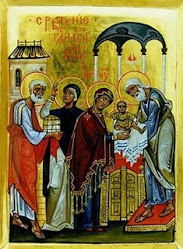

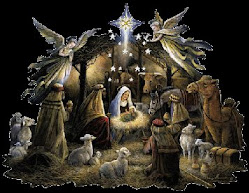

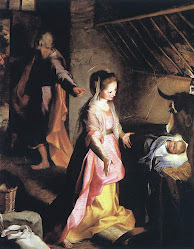










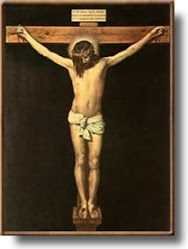


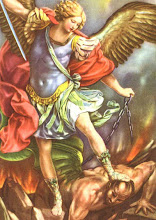
Nessun commento:
Posta un commento